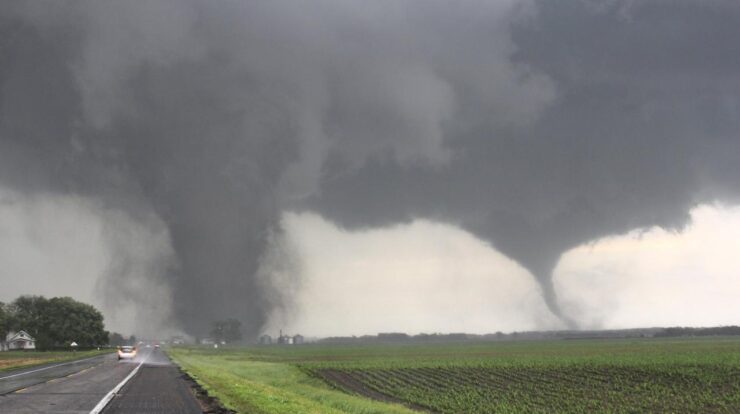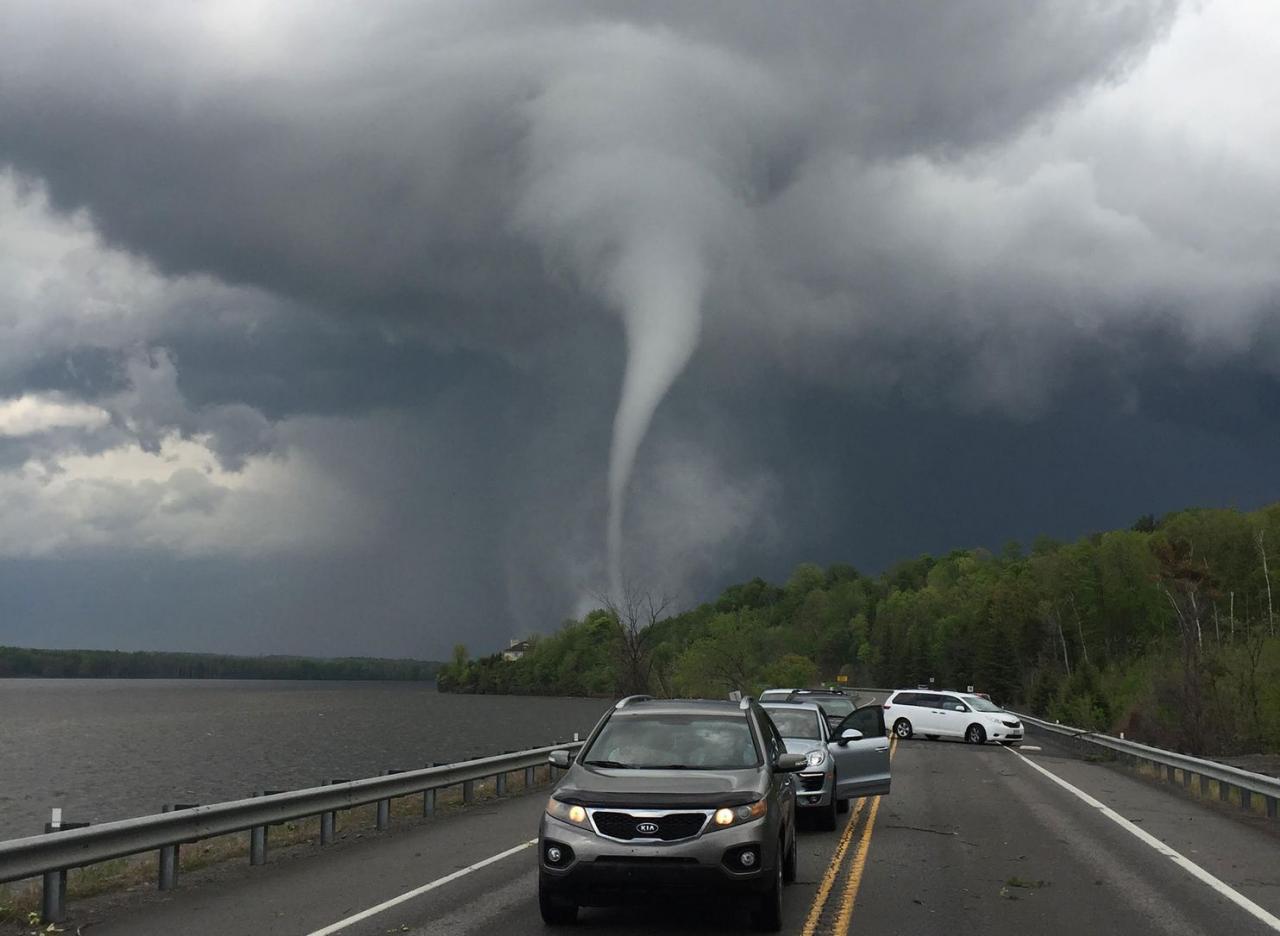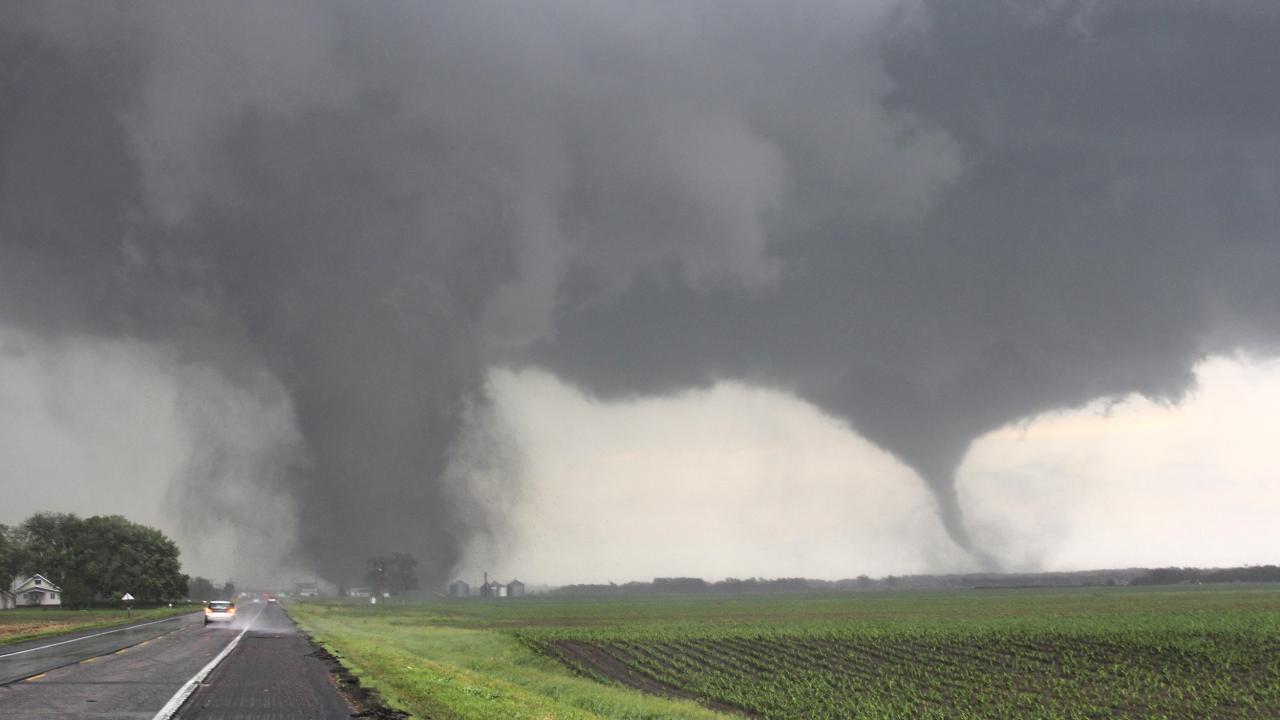
Tornadoes today – Tornadoes, nature’s wrathful twisters, are a force to be reckoned with. Today, we delve into the realm of these meteorological marvels, exploring their formation, safety precautions, forecasting methods, damage assessment, and the ongoing efforts to mitigate their destructive power.
Tornadoes, with their mesmerizing yet terrifying presence, have captivated the minds of scientists and the public alike. Their destructive force has left an indelible mark on communities worldwide, making it imperative to enhance our understanding and preparedness.
Tornado Basics
Tornadoes are violently rotating columns of air that extend from the base of a thunderstorm cloud to the ground. They are characterized by their funnel-shaped appearance, high wind speeds, and the ability to cause significant damage.
Tornadoes are relatively common, with an average of over 1,000 reported in the United States each year. They can occur anywhere in the world, but they are most frequent in the Great Plains of North America, the central and eastern regions of Argentina, and the northern regions of Australia.
Types of Tornadoes
- Weak tornadoes (EF0-EF1): Wind speeds of up to 110 mph, can cause minor damage to structures and trees.
- Strong tornadoes (EF2-EF3): Wind speeds of up to 165 mph, can cause significant damage to structures, including collapsed roofs and walls.
- Violent tornadoes (EF4-EF5): Wind speeds of over 165 mph, can cause catastrophic damage, including complete destruction of structures and the uprooting of trees.
Tornado Impact
- Structural damage: Tornadoes can cause significant damage to buildings, homes, and other structures. This damage can range from minor roof damage to complete destruction.
- Injuries and fatalities: Tornadoes can cause serious injuries or even death. Flying debris and high winds can pose a significant hazard to people in the path of a tornado.
- Economic losses: Tornadoes can cause billions of dollars in economic losses each year. This damage includes the cost of repairing or replacing damaged structures, lost productivity, and disruption of businesses.
Tornado Safety

Tornadoes can be deadly, but there are steps you can take to stay safe before, during, and after a tornado.
Before a Tornado
- Create a tornado safety plan and practice it with your family.
- Identify a safe place in your home, such as a basement or interior room on the lowest floor.
- Keep a battery-powered radio and flashlight handy.
- Know the tornado warning signs and be prepared to take shelter immediately.
During a Tornado, Tornadoes today
- If you are outside, find shelter in a sturdy building or underground. If you cannot find shelter, lie flat in a ditch or low-lying area and cover your head with your hands.
- If you are in a building, go to the lowest floor and find an interior room without windows. Crouch down and cover your head with your hands.
- Stay away from windows and exterior walls.
- If you are driving, pull over to the side of the road and stay in your car. Cover your head with your hands and wait out the tornado.
After a Tornado
- Stay away from damaged areas until they have been inspected by emergency responders.
- Report any downed power lines or gas leaks to the appropriate authorities.
- Check for injuries and seek medical attention if necessary.
- Contact your insurance company to report any damage.
Tornado Forecasting and Tracking
Tornadoes are difficult to predict, but meteorologists use a variety of tools and techniques to forecast and track them.
Tornado Forecasting
Meteorologists use computer models and weather data to identify areas that are at risk for tornadoes. They look for conditions such as strong wind shear, instability, and moisture.
Tornado Tracking
Once a tornado has formed, meteorologists use weather radar and other technologies to track its movement. This information is used to issue tornado warnings and to help people stay safe.
Tornado Warning Systems
Tornado warnings are issued by the National Weather Service when a tornado is imminent or has been spotted. These warnings are disseminated through a variety of channels, including television, radio, and social media.
Limitations of Tornado Forecasting and Tracking
While tornado forecasting and tracking have improved significantly in recent years, there are still limitations. Tornadoes can form quickly and without warning, and they can be difficult to detect in some cases.
Tornado Damage Assessment

Tornadoes can cause a wide range of damage, from minor structural damage to complete destruction.
Types of Tornado Damage
- Structural damage: Tornadoes can cause damage to buildings, homes, and other structures. This damage can range from minor roof damage to complete destruction.
- Tree damage: Tornadoes can uproot trees, break branches, and strip leaves. This damage can pose a hazard to people and property.
- Power outages: Tornadoes can damage power lines and other infrastructure, causing power outages. These outages can last for hours or even days.
- Debris: Tornadoes can create large amounts of debris, including pieces of buildings, trees, and other objects. This debris can pose a hazard to people and property.
Assessing Tornado Damage
After a tornado has passed, emergency responders and insurance companies assess the damage to determine the extent of the damage and to begin the process of recovery.
Tornado Damage Classification
Tornadoes are classified on the Enhanced Fujita Scale (EF Scale) based on the damage they cause. The EF Scale ranges from EF0 to EF5, with EF5 being the most destructive.
Tornado Climatology

Tornadoes can occur anywhere in the world, but they are most common in the Great Plains of North America, the central and eastern regions of Argentina, and the northern regions of Australia.
Geographical Distribution of Tornadoes
The geographical distribution of tornadoes is influenced by a number of factors, including latitude, altitude, and terrain.
Seasonal and Diurnal Patterns of Tornado Occurrence
Tornadoes can occur at any time of year, but they are most common in the spring and summer months. They are also more likely to occur during the afternoon and evening hours.
Factors Influencing Tornado Formation and Intensity
The formation and intensity of tornadoes is influenced by a number of factors, including:
- Wind shear: Wind shear is the difference in wind speed and direction between two levels of the atmosphere. Strong wind shear can help to create the rotating updraft that is necessary for tornado formation.
- Instability: Instability is a measure of the atmosphere’s ability to rise. Unstable air is more likely to form thunderstorms, which can lead to tornadoes.
- Moisture: Moisture is necessary for the formation of clouds and thunderstorms. Areas with high levels of moisture are more likely to experience tornadoes.
Tornado Research and Mitigation
Tornadoes are a major natural hazard, and scientists are constantly working to improve our understanding of these storms and to develop new ways to mitigate their impact.
Tornado Research
Tornado research is focused on improving our understanding of the formation, intensity, and movement of tornadoes. This research is conducted using a variety of methods, including:
- Field observations: Scientists use a variety of instruments to collect data on tornadoes, including Doppler radar, wind profilers, and mobile mesonet stations.
- Numerical modeling: Scientists use computer models to simulate the formation and movement of tornadoes. These models can help to improve our understanding of the factors that influence tornado behavior.
- Laboratory experiments: Scientists use laboratory experiments to study the physics of tornadoes. These experiments can help to develop new technologies for tornado detection and warning.
Tornado Mitigation
Tornado mitigation is focused on reducing the impact of tornadoes on people and property. This can be done through a variety of measures, including:
- Tornado warning systems: Tornado warning systems provide people with advance notice of approaching tornadoes. This allows people to take shelter and avoid the most dangerous areas.
- Tornado shelters: Tornado shelters provide a safe place for people to take shelter during a tornado. These shelters can be located in homes, schools, and other buildings.
- Building codes: Building codes can help to reduce the damage caused by tornadoes. These codes require buildings to be constructed with strong materials and to be able to withstand high winds.
Outcome Summary: Tornadoes Today
In the face of these atmospheric giants, knowledge is our greatest weapon. By unraveling the mysteries of tornadoes today, we empower ourselves to stay safe, minimize their impact, and contribute to the ongoing quest for mitigating their destructive force. Let us embrace this journey of exploration and understanding, for it is through collective knowledge and preparedness that we can weather the storms of tomorrow.
FAQ Summary
What is the most common type of tornado?
Weak tornadoes, rated EF0 or EF1 on the Enhanced Fujita Scale, are the most common.
What is the best way to stay safe during a tornado?
Seek shelter in a sturdy building, basement, or underground space. Stay away from windows and exterior walls.
How can tornadoes be forecasted?
Weather radar and atmospheric monitoring systems are used to detect and track tornadoes in their early stages.






